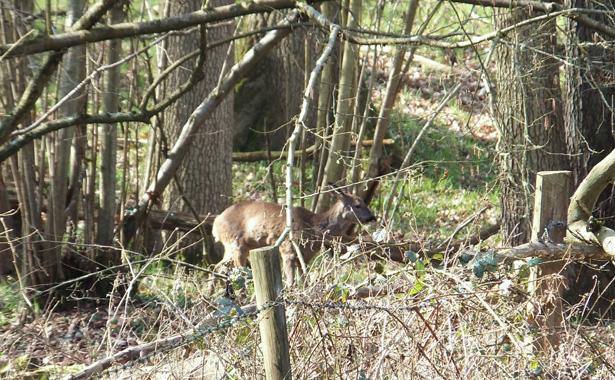Peter Jones considers the number of Roe deer that can reasonably be expected to be found on an area of land.
In a recent blog I wrote of the need to have a deer management plan.
An important part of making a plan requires being able to hazard a guess, and it will usually only be a guess, as to how many deer there are on your land. With nomadic, roaming deer like Fallow this is extremely hard if not impossible however with Roe it is a touch more viable.

Roe deer are self regulating in terms of their density within a particular habitat and at certain times of the year a given number will be forced to emigrate from one area to another due to the territorial behaviour of the dominant Does and Bucks, both of whom will force out the yearlings and weaker animals from a desired ground.
This of course makes it difficult to be accurate as the amount of Roe will vary according to the time of year. Personally I feel a great time of year to count Roe is during March when Roe deer will be found feeding in large family groups in the open fields. Indeed it was only last March that I counted the largest group of Roe Deer that I have ever seen, 14 in one field!
Another means of guessing numbers is of course by the simple observation of your surroundings. Look at the browse line on your Ivy trees, and the slots in the ground, all these small indications will assist you with guessing numbers.
So just how many Roe Deer can a ground sustain? This issue arose in my mind recently on one of my trips to my main Roe stalking ground in Hampshire. An area of which would make a very good study about density of Roe deer.
The plot in question is exactly 40.45 Acres, it has no footpaths and cattle graze the pasture for perhaps only a few weeks each year. The land itself is mainly open pasture with woods and hedgerow representing perhaps 10 acres of the overall land. The cover however is dense with a small stream running through that insures lush vegetation. The plot is edged by roads on three sides creating a kind of island effect and whilst not being a barrier to movement does help to discourage it.
Suffice to say it is an ideal habitat for Roe, undisturbed, great grazing and browse and in one of the milder parts of the UK. So just how many deer can a plot like this sustain? For many stalkers who manage small plots of land this is a frequently asked question as it is from this number that we calculate how many animals we will shoot each year. The golden rule being that we will aim to take around 30% of each sex in order to maintain the population.
Well over the last few years and indeed recently when out with client's I have been able to observe this plot quite carefully and I think that I have come to a fairly accurate conclusion.
Repeated observation has led me to believe that I consistently have an average of around six to eight Roe deer on this plot. To my mind I felt this was quite high and so I swatted up a bit on this subject to see if what I was witnessing was realistic. The consensus seems to be that this is about the maximum density of deer that can be healthily sustained on a plot this large at any one time.
Richard Prior in his excellent book 'Roe Deer Management and Stalking' reminds us that counting Roe deer is highly inaccurate and I agree it is, indeed normally I would refrain from even hazarding a guess however I have become confident that in this area in ideal circumstances this is around the number of deer that can be expected. Interestingly when estimating Roe deer numbers Richard Prior encourages us to count the acres of cover on our plots rather than straight acreage, what represents cover is a little ambiguous, however he implies that in ideal circumstances densities of around one Roe Deer per 5 acres can be sustained. This means that on this 40 Acre plot in question we might reasonably expect a maximum of around eight deer.
I have to be frank this seems a lot! And it is at this point that we should again revert to the principle that it is acres of cover and not land as a whole. However that said on this particular plot I have been consistently observing six Roe deer at any one time and make some allowance for more animals that may in all likelihood remain on the periphery and out of sight.
Clearly this is a guesstimate however for those managing small areas of Roe Stalking it is something to bear in mind. Remember of course that when calculating your cull there will also be a level of natural mortality from disease and traffic accidents etc and so my advice would be to be cautious with your population and try to monitor the numbers on a particular plot over years rather than from just one season. Keep clear cull records and observe the effect of your cull on the next year's count. It is from this longer term approach that you will get your most accurate idea of what your land will hold.


















